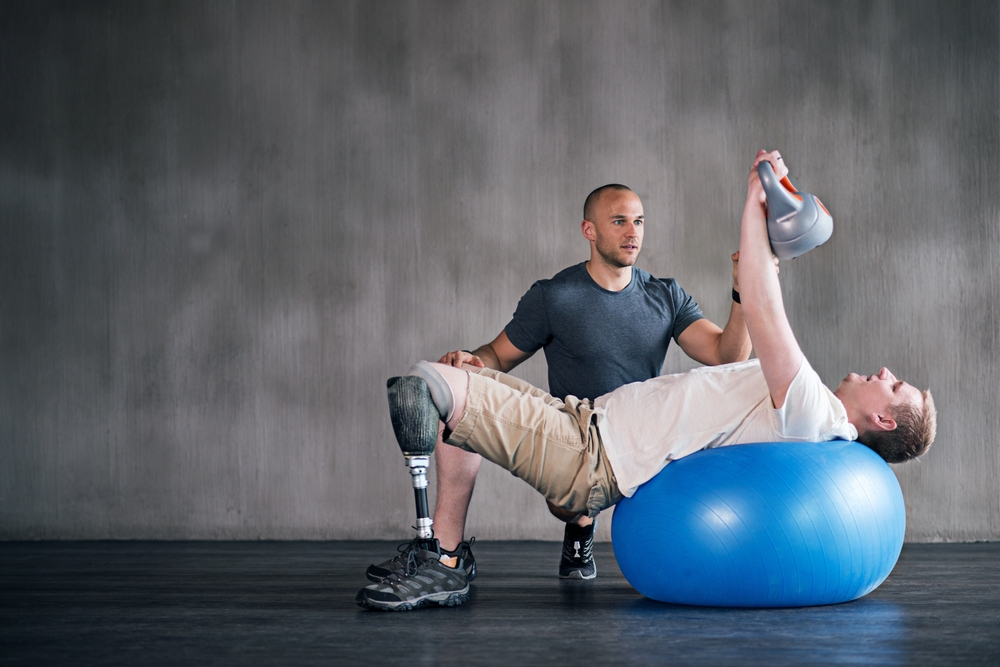Make an Appointment
Rehabilitation after breast cancer surgery encompasses therapies designed to restore physical function, manage treatment side-effects and enhance quality of life. Whether you’ve undergone a mastectomy, lumpectomy or axillary lymph node dissection, targeted rehabilitation helps you:
- Regain shoulder and arm mobility
- Prevent and manage lymphedema
- Rebuild strength, endurance and cardiovascular health
- Address fatigue, pain and psychosocial challenges
A holistic program often combines Physiotherapy for movement restoration, Exercise Physiology for safe cardiovascular and resistance training, and Occupational Therapy to adapt daily tasks and prevent overuse injuries. Early, structured rehabilitation significantly reduces complications and supports a return to meaningful activities.

How Do You Prevent Estrogen-Positive Breast Cancer Recurrence?
For women with estrogen receptor (ER)–positive breast cancer, comprehensive strategies combine medical, lifestyle and monitoring approaches:
A. Adjuvant Endocrine Therapy
- Tamoxifen (premenopausal) or Aromatase Inhibitors (postmenopausal) for 5–10 years to block estrogen’s effect on residual cancer cells .
- Adherence Support: SMS reminders, counselling and regular follow-up reduce early discontinuation, which occurs in up to 30% without support .
- Bone Health: Aromatase inhibitors can accelerate bone loss; supplement with calcium, vitamin D and engage in weight-bearing exercise to maintain bone density.
B. Lifestyle Modifications
- Nutrition: Emphasise cruciferous vegetables, whole grains, lean proteins and omega-3 fatty acids. Limit red meat, saturated fats and added sugars.
- Alcohol & Smoking: Limit alcohol to ≤1 standard drink/day and cease smoking, as both raise estrogen activity and recurrence risk.
C. Physical Activity
- Aerobic Exercise: ≥150 minutes/week of moderate‐intensity activity (brisk walking, cycling) reduces recurrence by up to 50% .
- Resistance Training: Two sessions/week targeting major muscle groups improve insulin sensitivity and lower adipose-derived estrogen.
D. Weight Management
- Aim for a BMI of 18.5–24.9: excess fat tissue produces additional estrogen. Combine caloric control with professional dietitian support.
E. Regular Surveillance
- Clinical Review: Biannual GP or oncology follow-up for 5 years, then annually.
- Imaging: Annual mammography and ultrasound per Cancer Australia’s guidelines .
- Self-Examination: Monthly checks of the breast and chest wall, reporting any changes immediately.

How to Recover After Breast Cancer Surgery
A phased approach ensures safe healing and progressive return to function:
Phase 1: Immediate Post-Operative (Weeks 0–2)
- Wound & Drain Care: Follow surgical team’s instructions for drain management and incision hygiene.
- Pain Management: Use prescribed analgesics; practice gentle diaphragmatic breathing.
- Early Mobilisation: Initiate pendulum exercises (arm swings) 3×/day to prevent stiffness.
Phase 2: Restoring Range of Motion (Weeks 2–6)
- Wall Climb: “Walk” fingertips up a wall as far as comfortable, 5–10 reps, 2–3×/day.
- Shoulder Flexion/Abduction: Lying supine, lift arm overhead within comfort.
- Scar Mobilisation: Once healed, gently massage the scar to prevent adhesions.
Phase 3: Strength and Endurance (Weeks 6–12)
- Resistance Exercises: Theraband routines for rotator cuff and scapular stabilisers: rows, external rotation, scapular squeezes.
- Aerobic Conditioning: Increase walking duration to 30 minutes most days.
- Lymphedema Precautions: Avoid heavy lifting (>2–3 kg) and elevate the arm during rest.
Phase 4: Return to Activities & Maintenance (>12 Weeks)
- Progressive Loading: Increase resistance band tension and incorporate light dumbbells under professional guidance.
- Functional Tasks: Practice daily activities (reaching cupboards, washing hair) to rebuild confidence.
- Ongoing Surveillance: Regular allied-health and oncology follow-up to monitor mobility and lymphedema.

What Exercises Should a Breast Cancer Patient Do After Surgery?
Incorporate a balanced programme of mobility, strength and cardiovascular exercises:
- Mobility & Stretching: Pendulum swings, wall “walks” and pectoral stretches in a doorway.
- Strength & Resistance: Theraband rows; external rotations; scapular retractions.
- Lymphedema Prevention: Hand squeezes, diaphragmatic breathing with arm elevation; compression sleeves if prescribed.
- Cardiovascular Fitness: Brisk walking, aquatic therapy to reduce joint stress .
- Mind–Body Practices: Yoga, Pilates or Tai Chi for posture, breathing and stress relief .
Always consult your physiotherapist or exercise physiologist before starting new exercises.

Prevention of Estrogen-Positive Recurrence Through Lifestyle and Exercise
Building on pharmacological therapy and surveillance, a structured lifestyle and exercise regimen further minimises recurrence risk:
Regular Aerobic Activity
Aim for at least 150–200 minutes/week of moderate cardiovascular exercise—brisk walking, cycling or swimming, to maintain a healthy weight and lower estrogen levels . Spread activity across most days, gradually increasing duration under professional guidance.
Targeted Strength Training
Include two resistance sessions/week focusing on major muscle groups (legs, back, chest, core). This not only regulates hormones by improving insulin sensitivity but also counteracts bone density loss associated with aromatase inhibitors .
Flexibility, Balance & Mind–Body Practices
Engage in yoga, Pilates or Tai Chi twice weekly to improve posture, reduce chest/shoulder tightness and promote lymphatic drainage. These activities also foster mindfulness and stress management.
Nutrition & Weight Management
Maintain a BMI of 18.5–24.9 through an anti-inflammatory diet: plenty of vegetables, whole grains, lean proteins and omega-3 sources. Limit processed foods, refined sugars and alcohol to no more than one standard drink/day .
Smoking Cessation & Alcohol Moderation
Eliminate smoking and reduce alcohol intake, as both elevate estrogen activity and compromise overall health.
Allied-Health Collaboration
Regular sessions with your Exercise Physiologist will safely progress intensity and volume. Occupational Therapists can integrate movement into daily routines—such as marching on the spot during domestic tasks—making exercise habitual and sustainable.

Frequently Asked Questions (FAQ)
!. When should I start rehabilitation exercises?
Gentle mobility (pendulums) can begin once cleared: often Day 1–2 post-op. Strength work and aerobic conditioning typically start around Week 2–3 under guidance.
2. Can exercise reduce recurrence?
Yes. physical activity is linked to a 40–50% lower risk of recurrence in ER-positive breast cancers .
3. How do I recognise lymphedema?
Look for persistent swelling, heaviness or tightness in the arm. Early intervention with compression and manual drainage yields the best outcomes.
4. Are allied-health referrals needed?
You can self-refer to physiotherapy, exercise physiology and occupational therapy. Check your My Aged Care package or private health cover for rebates.
5. How long does rehabilitation last?
Most women complete core recovery in 8–12 weeks. Maintenance of exercise and lifestyle changes continues indefinitely to support long-term health.

Rehabilitation after breast cancer surgery is vital to restore function, manage side effects and reduce recurrence risk. A personalised, multidisciplinary plan: integrating Physiotherapy, Exercise Physiology and Occupational Therapy, empowers you to regain mobility, strength and confidence.
Next Steps:
- Book your Initial Assessment with Physio Inq, available in-home, in-clinic or online.
- Develop Your Phase-by-Phase Plan, including tailored exercises, lymphedema prevention and lifestyle strategies.
- Schedule Regular Reviews with your allied-health team to adapt your program as you progress.
Call 1300 731 733 or book online to start your personalised rehabilitation journey, so you can thrive beyond surgery.

Date Published: Tuesday, May 27, 2025
Locate a Womens Health Physiotherapy
Service Near me
Get the experience & convinence you deserve to support your or a loved one's allied health needs.
Our Womens Health Physiotherapy team are currently serving & taking appointments in the following states and regions in Australia:
Need to get into direct contact with ur Client Services team? We're all ears. Call our team directly on 1300 731 733



